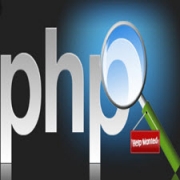Semantic Management of Streaming Data
ABSTRACT
One of the fundamental challenges facing the unprecedented data deluge produced by the sensor networks is how to manage time-series streaming data so that they can be reasoning-ready and provenance-aware. Semantic web technology shows great promise but lacks adequate support for the notion of time. We present a system for the representation, indexing and querying of time-series data, especially streaming data, using the semantic web approach. This system incorporates a special RDF vocabulary and a semantic interpretation for time relationships. The resulting framework, which we refer to as Time-Annotated RDF, provides basic functionality for the representation and querying of time-related data. The capabilities of Time-Annotated RDF were implemented as a suite of Java APIs on top of Tupelo, a semantic content management middleware, to provide transparent integration among heterogeneous data, as present in streams and other data sources, and their metadata. We show how this system supports commonly used time-related queries using Time Annotated SPARQL introduced in this paper as well as an analysis of the TA-RDF data model. Such prototype system has already seen successful usage in a virtual sensor project where near-real-time radar data streams need to be fetched, indexed, processed and re-published as new virtual sensor streams.
INTRODUCTION
In this paper we present a semantic stream manager aimed at the problem of ntegrating streaming data into RDF and semantic-web enabled infrastructureand applications. We introduce TA-RDF, a formal model to semantically represent streams and a software implementation to efficiently access those streams. This has enabled integration of stream data with other data and metadata, including documents, imagery, workflows, provenance, and annotations. The TA-RDF model remains translatable/compatible with regular RDF by means of an special RDF vocabulary, which allows the use of existing RDF tools and technologies.The necessity for such model becomes evident when observing the rapid development and deployment of various scales of sensor networks for various observation purposes, which have resulted in an unprecedented data deluge. One of the major challenges is to support various temporal relationship queries. In addition, sensor data streams publishing and re-publishing after certain processing require provenance support for validation and verification .
چکیده
یکی از چالش های اساسی که موجب بی نظمی داده های داده شده توسط شبکه های حسگر شده است، نحوه مدیریت جریان داده های سری زمانی است تا بتوانند آمادگی و آمادگی دقیق داشته باشند. تکنولوژی وب معنایی، وعده بزرگ را نشان می دهد، اما از لحاظ زمان، پشتیبانی کافی از آن را ندارد. ما یک سیستم برای نمایندگی، نمایه سازی و پرس و جو از داده های سری زمانی، به ویژه جریان داده ها، با استفاده از رویکرد وب معنایی ارائه می کنیم. این سیستم دارای یک واژگان RDF ویژه و یک تفسیر معنایی برای روابط زمان است. چارچوب حاصل، که ما آن را به عنوان RDF تعریف شده با زمان اشاره می کنیم، قابلیت های اساسی برای نمایش و پرس و جو از اطلاعات مرتبط با زمان را فراهم می کند. قابلیت RDF با عنوان خوانده شده به عنوان مجموعه ای از API های جاوا در بالای Tupelo، middleware middleware مدیریت محتوا، برای ارائه یکپارچگی شفاف بین داده های ناهمگن مانند موجود در جریان ها و سایر منابع داده ها و فراداده های آنها، اجرا شد. ما نشان می دهیم که چگونه این سیستم از پرس و جو های مرتبط با زمان مورد استفاده با استفاده از SPARQL تایید شده معرفی شده در این مقاله و همچنین تجزیه و تحلیل مدل داده TA-RDF پشتیبانی می کند. چنین سیستم نمونه اولیه قبلا استفاده موفق در یک پروژه حسگر مجازی را دیده است که جریان داده های رادار را در نزدیکی زمان واقعی باید به عنوان جدید جریان مجازی مجازی به دست آورد، نشان داده شده، پردازش شده و مجددا منتشر شود.
مقدمه
در این مقاله ما یک مدیر جریان معنایی با هدف نابودی داده های جریان داده شده در RDF و برنامه های کاربردی Infrastructure و برنامه های کاربردی تحت وب معنایی ارائه می کنیم. ما TA-RDF را معرفی می کنیم که یک مدل رسمی برای نشان دادن روان شناختی و اجرای نرم افزاری برای دسترسی موثر به آن جریان است. این امر ادغام داده های جریان داده را با سایر داده ها و فراداده ها، از جمله اسناد، تصاویر، جریان های کاری، پروژۀ و حاشیه نویسی، فعال کرده است. مدل TA-RDF همچنان قابل ترجمه / سازگاری با RDF معمولی با استفاده از یک واژگان RDF خاص است که اجازه استفاده از ابزارهای RDF موجود و تکنولوژی ها را می دهد. ضرورت این مدل در هنگام مشاهده توسعه سریع و استفاده از مقیاس های مختلف سنسور شبکه های مختلف برای اهداف مشاهده، که منجر به داده های بی سابقه ای از داده ها است. یکی از مهمترین چالش ها، پشتیبانی از نمایش های مختلف زمانی است. علاوه بر این، جریان های داده های سنسور انتشارات و مجددا انتشار پس از پردازش خاص نیاز به حمایت از پرونده برای اعتبار سنجی و تایید.
Year: 2009
Publisher : IEEE
By : Alejandro Rodr´ıguez, Robert McGrath, Yong Liu, and JamesMyers
File Information: English Language/ 16 Page / size: 304 KB
سال : 1388
ناشر : IEEE
کاری از : الجاندرو رودریگز، رابرت مک گرات، یونگ لیو و JamesMyers
اطلاعات فایل : زبان انگلیسی / 16 صفحه / حجم : KB 304


![Semantic Management of Streaming Data[taliem.ir]](https://taliem.ir/wp-content/uploads/Semantic-Management-of-Streaming-Datataliem.ir_.jpg)
![Reactive Power Generation Management for the[taliem.ir] Reactive Power Generation Management for the[taliem.ir]](https://taliem.ir/wp-content/uploads/Reactive-Power-Generation-Management-for-thetaliem.ir_-1.jpg)
![A Web Enabled Secured System for Attendance[taliem.ir] A Web Enabled Secured System for Attendance[taliem.ir]](https://taliem.ir/wp-content/uploads/A-Web-Enabled-Secured-System-for-Attendancetaliem.ir_.jpg)
![Semantic Management of Streaming Data[taliem.ir] Semantic Management of Streaming Data[taliem.ir]](https://taliem.ir/wp-content/uploads/Semantic-Management-of-Streaming-Datataliem.ir_-1.jpg)
![An architectural design for effective information retrieval in semantic[taliem.ir] An architectural design for effective information retrieval in semantic[taliem.ir]](https://taliem.ir/wp-content/uploads/An-architectural-design-for-effective-information-retrieval-in-semantictaliem.ir_.jpg)
![NoSQL Systems for Big Data Management[taliem.ir] NoSQL Systems for Big Data Management[taliem.ir]](https://taliem.ir/wp-content/uploads/NoSQL-Systems-for-Big-Data-Managementtaliem.ir_.jpg)

![Determinants-of-choice-of-semantic-web.[taliem.ir] Determinants-of-choice-of-semantic-web.[taliem.ir]](https://taliem.ir/wp-content/uploads/Determinants-of-choice-of-semantic-web.taliem.ir_.jpg)
![Combining Semantic Web technologies with Multi-Agent Systems[taliem.ir] Combining Semantic Web technologies with Multi-Agent Systems[taliem.ir]](https://taliem.ir/wp-content/uploads/Combining-Semantic-Web-technologies-with-Multi-Agent-Systemstaliem.ir_.jpg)

![Energy optimization of ant colony[taliem.ir]](https://taliem.ir/wp-content/uploads/Energy-optimization-of-ant-colonytaliem.ir_-150x150.jpg)
![A Secure Cloud Computing Based Framework[taliem.ir]](https://taliem.ir/wp-content/uploads/A-Secure-Cloud-Computing-Based-Frameworktaliem.ir_-150x150.jpg)
دیدگاه خود را ثبت کنید
تمایل دارید در گفتگو شرکت کنید؟نظری بدهید!